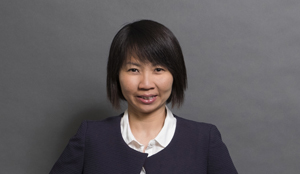Copyright Protection for AI generated works - Recent Developments
Much ink has been split on the question of whether AI-generated works ought to enjoy copyright protection. As the issue continues to be debated around the world, a Chinese court has ruled that an image generated by text-to-image generation software could enjoy copyright protection as an artistic work. In this article, we explore this decision and the approaches taken elsewhere in the world on this hot topic.
What appears to be the problem?
In a nutshell, the objection to granting copyright protection to AI-generated works stems from the requirement that the work must be “original”. In the past, disputes over originality were centred on whether the threshold for a work to be considered “original” had been met. For AI-generated works, the more loaded questions are whether creativity can only stem from the creative input of a human author, and if so, whether the user of the generative AI tool can be recognised an author by virtue of his selection of prompts to be fed into the tool to generate the output.
What did the Chinese court decide?
The case that came before the Chinese court, Li Yunkai v. Liu Yuanchun, involved images generated by the open-source image generator.
The plaintiff generated an image by inputting prompts into the open-source image generation software and shared them on his social media account. About a month later, the defendant used these images in an article published on another social media platform, notably removing the plaintiff’s watermark. This led the plaintiff to claim infringement of his right to attribution and right to disseminate information over the internet, prompting legal proceedings in the Beijing Internet Court. In this case, two primary issues were addressed.
(1) Copyrightability: Whether AI-generated images can be classified as "works"
In practice, Chinese courts evaluate whether an authorial work qualifies as a "work" by considering four factors: (a) whether the work is in the field of literature, art, or science; and whether the following are present: (b) originality; (c) tangible expression; and (d) intellectual contribution. Of particular significance in this context is the debate surrounding the originality of an AI-generated image.
The court determined that the plaintiff actively designed elements within the images, such as characters and their presentation, through prompts. Additionally, the plaintiff determined the layout and composition of the images using specific parameters. These actions reflected the plaintiff's personal choices and arrangement preferences, thereby imbuing the images with originality. Besides, the plaintiff continuously refined the images by modifying prompts after the initial image creation. This iterative process further emphasised the plaintiff's aesthetic choices and subjective judgments, reinforcing the presence of originality.
It is noteworthy that this is not the first time a Chinese court has examined the copyrightability of AI-generated content. In Tencent v. Yingxun, Yingxun made unauthorised use of a financial review article generated by Tencent using its self-developed AI software. The court established that the AI-generated article possessed originality and constituted a work under copyright law.
(2) Authorship: Determining the authorship of AI-generated work
In Tencent v. Yingxun, Tencent, as the developer of the AI tool, was also the user that used the AI to generate the article. Consequently, the court promptly recognised the article Tencent’s work, with minimal analysis. However, in Li Yunkai v. Liu Yuanchun, where different roles were involved in AI development and usage, the court attributed authorship to the plaintiff who is the user of the AI tool, consequently granting copyright ownership.
To summarise, the Chinese court considered AI as a mere tool for human creativity. The judgment, particularly concerning the originality of AI-generated content, primarily focuses on whether the creative input provided by human users satisfies the criteria for originality. However, it should be noted that the court also highlighted that the determination of whether AI-generated content constitutes a "work" under the Copyright Law is a case-specific endeavour and its rule cannot be broadly generalised. Thus, it remains to be seen how future cases will be decided.
How have other jurisdictions tackled this issue?
The Chinese court’s approach can be contrasted with that taken by the US Copyright Office. In a high-profile decision, the Office first allowed, then denied, copyright registration to images in a graphic novel entitled “Zarya of the Dawn” which had been generated with the help of the same generative AI tool. This is despite the author’s claims that she had used “hundreds and thousands” of iterative prompts to arrive at the final images.
The US Copyright Office subsequently commented in a policy statement on works containing AI-generated material [insert link] that “users do not exercise ultimate creative control over how [the generative AI technologies currently available] interpret prompts and generate material”, likening these prompts to “instructions to a commissioned artist”. If that is the case, the user cannot be regarded as an author no matter how many fine-tuning prompts he entered into the tool. That being said, the Copyright Office left some leeway by also commenting that much will depend on how the AI tool operates and how it was used. Examples given in the policy statement include where a human (i) has selected or arranged the AI-generated materials in a sufficiently creative way such that “the resulting work as a whole constitutes an original work of authorship"; or (ii) modifies AI-generated materials such that the modifications meet the standard for copyright protection.
In the EU, the issue is viewed through the lens of whether AI-generated material can be considered an original work by virtue of being an author’s own intellectual creation under the case law of the EU’s Court of Justice. The requirement for an original work to reflect the author’s personality by allowing them to express their creative abilities by making free and creative choices is commonly cited as restricting the application of copyright to certain types of AI generated material. This requirement suggests that inputting a simple text prompt would be unlikely to result in copyright protection for the resulting output, although that may leave the door open to protection for works created through the use of iterative prompting where the AI system is used as a tool to achieve a desired result. However, case law applying these principles to AI generated materials is currently lacking.
There is also uncertainty regarding the protection of AI-generated materials in the UK. Back in 1988 the UK introduced a category of “computer generated works” into its copyright law. These are works without human authors and the intention was to cover things like satellite photography, along with AI creations. However, computer-generated works still needed to be original to obtain protection and it has never been decided whether something without a human author could be original. This problem became more acute when (prior to Brexit) the UK started to apply the EU Court of Justice case law mentioned above, which appears to premise originality on the existence of a human author.
A UK Intellectual Property Office (UKIPO) public consultation in 2021 recognised the argument that the current UK law on computer generated works is unclear and contradictory and asked for views on whether to remove this protection or replace it with a new right with reduced scope and duration. No clear consensus emerged and in 2022 the UKIPO decided to leave the law as it is, concerned that AI generated works are still in their early stages and changes could have unintended consequences.
More recently, the South Korea Ministry of Culture, Sports and Tourism, which oversees the country’s copyright policy, announced that it will not grant copyright registration to AI-generated works, unless the work “demonstrably convey[s] human thoughts and emotions”. This new policy reportedly follows extensive consultations with industry groups and extensive deliberations, and will be included in an “AI Copyright Guidebook” to be published at a later date. It remains to be seen how the policy will be implemented in practice. The carve-out certainly provides room for an approach similar to the Chinese court’s to be taken.
Conclusion – Looking ahead
The current differing approaches taken internationally appear to be very much driven by policy considerations. However, as the divergence of laws can seriously impair the protection granted to (some types of) AI-generated works by some countries, it seems that at least some degree of harmonisation would be required in the future – not only on whether AI-generated works should be protected, but also the parameters for any protection granted. In particular, the scope and duration of protection will have to be carefully scoped to ensure that the protection afforded reflects reflect the much higher speed and volume at which generative AI tools can generate works.




